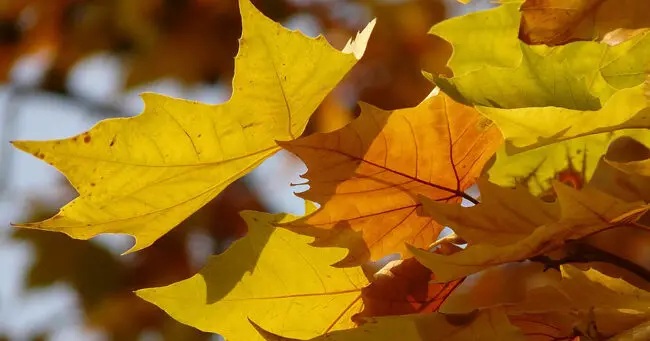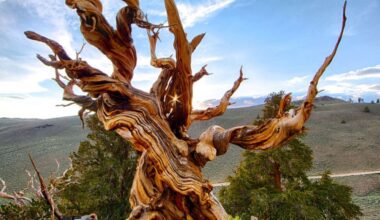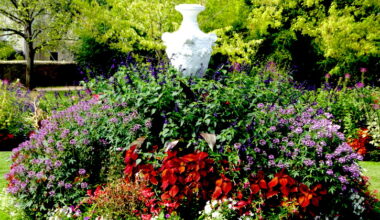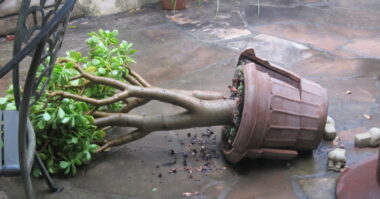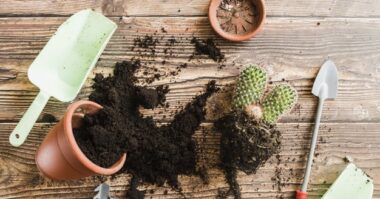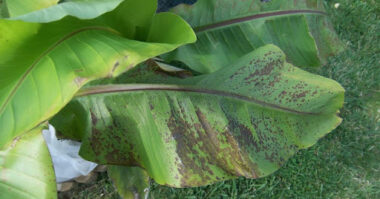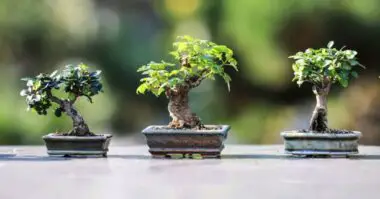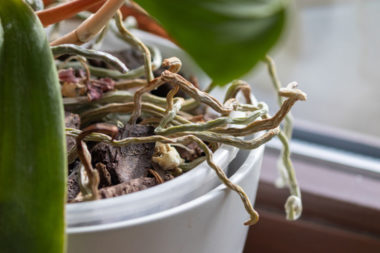The acers is particularly recommended to create a Zen garden of Japanese inspiration. It is equally at home on a terrace or in a small garden with modern lines.
However, many people wonder if it loses its leaves from time to time, and if so, is this normal?
If your acers loses its leaves, here are the three most common reasons:
- This deciduous tree loses its leaves before winter.
- It has too much sun or it lacks water, its foliage burns. Place it in half-shade with a layer of mulch at its base.
- It has verticilliosis, a cryptogamic disease that stops the circulation of sap. The affected branches must then be removed and a biological treatment applied. To prevent this from happening again, it is important that the substrate of the acers be well drained.
Contents
Why is my acers losing its leaves?
A priori, if your acers plane or sycamore tree (Acer platanoides) was suffering from a root disease such as rottenness, fusarium, verticilliosis or was under attack from Phytophthora, the defoliation would affect the tree in a global way.
However, it is likely that an insect pest has attacked your tree in a punctual and localized manner, or, if the branch in question is exposed, that a strong wind has dried out the branch and caused the fall of its leaves.
How to revive an acer?
Your Acer looks bad? First, ask yourself why!
- If its leaves are all dry in spring, summer or early fall, it probably has too much sun! It should then be moved to a partially shaded location. In a pot, move only the container, in the ground wait until its leaves have fallen before transplanting it. Don’t forget to check that its substrate is fresh and that it doesn’t lack water!
- The leaves are nibbled or the tree is colonized by small white caterpillars? These can be mealy bugs or defoliating caterpillars. Use a black soap solution to control these pests.
- Entire branches have dried out very quickly? It is probably the rotten (or armilliary) plant. This fungus only attacks the roots and causes them to rot. When you realize this, it is often already too late, so you have to remove the dead tree and change the substrate. This fungus develops in heavy and humid soil. Either you have watered too much, or your soil is not favourable for acers. Do not hesitate to grow it in pots and water without soaking the soil.
- None of the above hypotheses convince you? Consider enriching your acers’ substrate with organic fertilizer once a year at the end of winter.
Dry leaves on an acers tree
Many gardeners are thinking of buying an acers, with the idea of setting up a small Japanese space or just to enjoy the fall show offered by the remarkable changing colors of this heather shrub. However, it is important to know that the acers is known to be fragile, especially in the first years of cultivation. Among the diseases that affect it, the most common is probably that of dry leaves. What is the cause and how can it be remedied?
The acers is probably one of the most delicate shrubs to cultivate, even if it does not require much maintenance. Placed in unsuitable conditions, its leaves begin to dry from the tips and then gradually curl.
The whole leaf eventually turns brown before falling off. The entire foliage can thus fall (which is common on trees undergoing a first repotting), and then reappear very gradually thereafter.
In other cases, the leaves take on their autumn livery prematurely, sometimes even in the middle of summer!
How do you restart an acers that has dry leaves?
The most common mistake is to expose a freshly planted potted acers to the full sun, on the south side of the garden or terrace; whereas this shrub likes itself a contrario in cooler atmospheres!
The Acer fears a too strong light and a stifling heat that will burn its foliage. Find a place for it in the shade, under the cover of a large tree for example, or, if necessary, in semi-shade (the acers will then benefit from thick shade all afternoon).
On the soil or substrate side, offer a mixture of garden soil and heather soil. All Acers – palmatum and japonicum: both are commonly referred to as Japanese maple – appreciate acid soils but fear limestone soils.
The problem is that these substrates dry out faster than average. So remember to water the shrub very regularly throughout the summer, allowing the water to moisten the entire root ball.
Finally, spare it from gusts of wind as well. In summer, they accentuate the drying of the leaves while in winter, this same wind stings!
In summary: To avoid the premature appearance of dry leaves on your acers, move it to a shady place, sheltered from the wind, and keep its soil moist. If the young tree is in the ground, wait until the return of more favourable weather conditions (in October) to move it.
It is in the ground that everything is played out!
The acers lives and grows in heavy, moist, low filtering soils, typically clay soils and soils that collect rainwater. It is in this humid environment that the spores will proliferate and the fungus will expand its network. If you plant a young acers in this broth, you can be sure that its roots will be contaminated in only a few months.
Namely: the acers is in every way comparable in its mode of propagation as in its mode of infection with phytophthora, another fungus that parasitizes in the same way a large number of heather earth shrubs such as Rhododendrons, Kalmias, Daphnia… Like acers, phytophthora spreads in heavy and humid soils.
Summary
Owners of acers often wonder if it is normal for a maple tree to lose its leaves. Indeed, the acers have a habit of losing their leaves before winter. We explain everything about the loss of leaves on your acers in this article.
